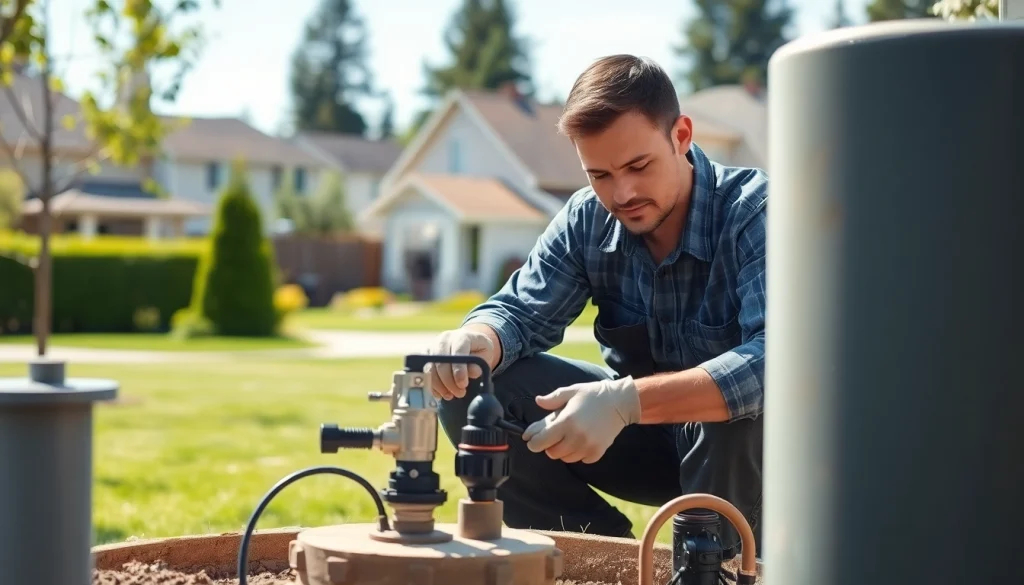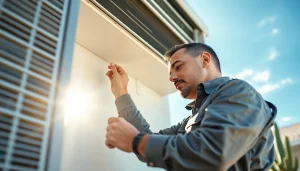
Understanding Well Pump Systems
Well pumps are crucial components in providing a reliable water supply to homes and businesses, particularly in areas not served by municipal water systems. In Lacey, WA, where private wells are common, understanding the well pump system is essential for homeowners. Having the ability to diagnose issues, perform maintenance, and recognize when it’s time for a well pump replacement lacey wa ensures that your water source remains functional and efficient.
What Is a Well Pump?
A well pump is a device used to draw water from underground aquifers and deliver it to the surface for household or agricultural use. These pumps utilize various mechanisms to lift water, depending on their type. The selection of a well pump is influenced by the depth of the well, water demand, and the specific application for which the water is used—be it drinking, irrigation, or industrial purposes.
Types of Well Pumps Available
There are several types of well pumps, each suited to specific conditions and requirements:
- Submersible Pumps: Ideal for deep wells, submersible pumps are located beneath the water and push water to the surface. They are known for their efficiency and high capacity.
- Jet Pumps: Typically used in shallow wells, jet pumps pull water through suction. They can be placed above ground, making them easier to access for maintenance.
- Vertical Turbine Pumps: These pumps are designed for deep and high-capacity applications, suitable for irrigation or municipal water supply.
- Hand Pumps: In areas with minimal infrastructure, hand pumps can deliver water in emergencies, providing a backup option for residents in Lacey.
Benefits of Regular Maintenance for Well Pumps
Regular maintenance of well pumps offers significant benefits, including:
- Prolonged Lifespan: Routine checks and maintenance can extend the life of your pump, preventing premature failures.
- Consistent Performance: Regular servicing ensures that the pump operates efficiently, providing a steady water supply without fluctuations.
- Cost Savings: By identifying issues early, homeowners can avoid costly repairs or replacements down the line.
Signs You Need Well Pump Replacement Lacey WA
Understanding the indications that it is time for a well pump replacement is vital for maintaining home water supply and quality. Recognizing these issues early can prevent more severe problems.
Identifying Common Failure Indicators
Common indicators that may suggest the need for a well pump replacement include:
- Age of the Pump: Most pumps have a lifespan of 10 to 15 years. If your pump is approaching or has exceeded this range, it may be time to consider a replacement.
- Insufficient Water Supply: If you’re experiencing decreased water pressure or inconsistent flow, it could mean the pump is failing.
- Unusual Noises: Sounds such as grinding, rattling, or hissing can signal mechanical failure within the pump.
Understanding Water Quality Issues
Water quality issues can also indicate a failing well pump. Signs to watch for include:
- Murky or Cloudy Water: This could indicate sediment or contaminants in your water, possibly due to pump deterioration.
- Changes in Taste or Odor: If your water begins to taste or smell unusual, it may stem from pump or well contamination.
- Presence of Contaminants: Regular testing for bacteria or chemicals can help establish if the pump is contributing to water quality issues.
Evaluating Service Life and Wear
Regular evaluations of your well pump’s service life and wear are important for long-term functionality. Signs include:
- Frequent Repairs: If you find yourself frequently repairing your well pump, it may be more cost-effective in the long run to replace it.
- Increased Energy Costs: Pumps that work harder due to decreased efficiency can lead to higher electricity bills.
- Visible Damage: Cracks, rust, or corrosion may suggest that the pump is no longer safe or effective.
The Replacement Process: Step-by-Step Guide
When the decision has been made to replace your well pump, understanding the process can streamline the experience. Here’s a step-by-step guide to assist homeowners in Lacey, WA.
Preparing for Well Pump Replacement Lacey WA
Preparation is crucial for a successful replacement. Consider the following steps:
- Gather Documentation: Collect information regarding the existing pump system, such as manuals, installation documents, and maintenance records.
- Research Local Regulations: Ensure you understand any permits or regulations necessary for well pump replacement in your area.
- Budgeting: Determine a budget that includes the cost of the new pump, installation, permits, and any additional repairs needed.
Choosing the Right Replacement Pump
Selecting the appropriate pump is critical. Factors to consider include:
- Well Depth and Diameter: Know your well’s specifications to choose a pump that fits properly.
- Water Demand: Assess your household or business’s water needs to determine the best capacity and flow rate for your new pump.
- Energy Efficiency: Consider selecting an energy-efficient model to save on long-term operating costs.
Hiring the Right Professionals for the Job
Engaging qualified professionals for installation is important to ensure the job is done correctly. Look for the following qualifications:
- Licensing and Insurance: Ensure the contractor has the necessary licenses and insurance to operate in Lacey, WA.
- Experience: Choose a contractor with a proven track record in well pump replacements and installations.
- References and Reviews: Look for reviews and ask for references from previous clients to gauge quality.
Cost Considerations for Well Pump Replacement Lacey WA
Understanding the financial aspects of well pump replacement is essential for homeowners. Here are the main factors that can impact costs.
Factors Influencing Replacement Costs
The following factors contribute to the overall cost of well pump replacement:
- Type of Pump: Different types of pumps can vary significantly in price based on their construction and functionality.
- Installation Complexity: The complexity of the installation can drive costs up, particularly if there are unexpected complications.
- Site Conditions: If the site contains difficult terrain or is hard to access, additional costs may be incurred.
Comparing DIY vs. Professional Services
While DIY might seem like an attractive option, weigh the pros and cons:
- DIY Cost Savings: Handyman projects may save on labor costs but can lead to costly mistakes if not done correctly.
- Professional Expertise: Hiring professionals ensures that the job complies with local regulations and safety standards, reducing the chances of costly repairs in the future.
Budgeting for Maintenance Post-Replacement
Once your new well pump is in place, maintain a budget for ongoing maintenance:
- Scheduled Inspections: Regular inspections can help identify potential problems before they escalate.
- Testing Water Quality: Invest in periodic water quality testing to ensure no new issues arise following replacement.
- Routine Maintenance: Allocate funds for routine maintenance to prevent unexpected breakdowns and prolong the longevity of your pump.
Post-Replacement Best Practices
Once you have successfully replaced your well pump, implementing best practices will help ensure its optimal performance moving forward.
Regular Maintenance Tips for Longevity
To increase the lifespan of your well pump, follow these maintenance tips:
- Check System Pressure Regularly: Maintaining adequate pressure prevents strain on the pump.
- Inspect Components: Regularly check electrical connections, fittings, and the pump casing for any signs of wear or damage.
- Keep Records: Document maintenance activities and any repairs for future reference.
Monitoring System Performance
Monitoring the performance of your well pump can prevent unnecessary repairs:
- Install Pressure Gauges: These devices can help monitor pressure fluctuations and are critical for diagnosing potential issues.
- Watch for Irregularities: Be aware of unusual sounds or changes in water quality or pressure, as these may be early signs of a problem.
Understanding Warranty and Service Agreements
Familiarize yourself with your pump’s warranty and available service agreements to ensure adequate coverage:
- Warranty Details: Understand what is covered under the warranty and the duration. This will help you know what to expect if a replacement or repair is necessary.
- Service Agreements: Consider purchasing a service agreement for regular maintenance from the installer to keep your well system in optimal condition.






